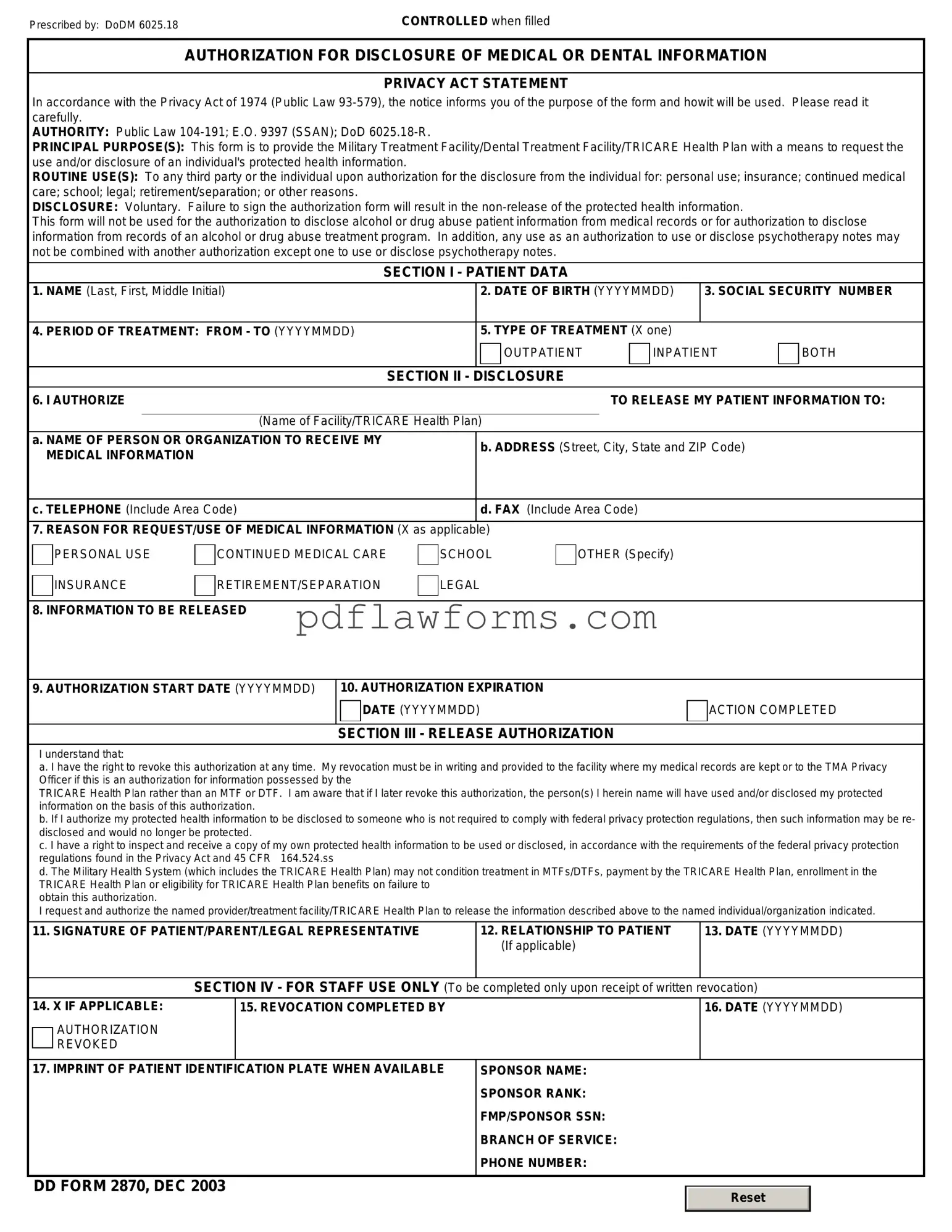Completing the DD 2870 form can be a straightforward process, but many individuals encounter common pitfalls that can lead to delays or complications. One frequent mistake is failing to provide complete personal information. This includes not only the individual's name and contact details but also the correct Social Security number. Inaccurate or missing information can hinder the processing of the form.
Another common error is neglecting to sign and date the form. A signature is essential, as it verifies the authenticity of the information provided. Without a signature, the form may be considered incomplete, resulting in a rejection or request for resubmission.
Many people also overlook the importance of carefully reading the instructions. Each section of the DD 2870 form has specific requirements, and misunderstanding these can lead to incorrect answers. For instance, certain questions may require additional documentation or explanations that are not immediately obvious.
In addition, individuals often fail to check for consistency in their responses. Discrepancies between different sections of the form can raise red flags and lead to further inquiries. It is crucial to ensure that all information aligns and accurately reflects the individual's situation.
Another mistake involves submitting the form without proper documentation. The DD 2870 may require accompanying paperwork, such as proof of eligibility or identification. Failing to include these documents can result in delays in processing or even denial of the request.
Some applicants also underestimate the importance of keeping a copy of the completed form. Without a record, it becomes challenging to track the submission and follow up if necessary. Retaining a copy can provide peace of mind and serve as a reference for future communications.
Lastly, individuals sometimes miss the submission deadlines. Each situation may have specific timelines that must be adhered to. Missing these deadlines can jeopardize the entire process, making it essential to be aware of all relevant dates.
